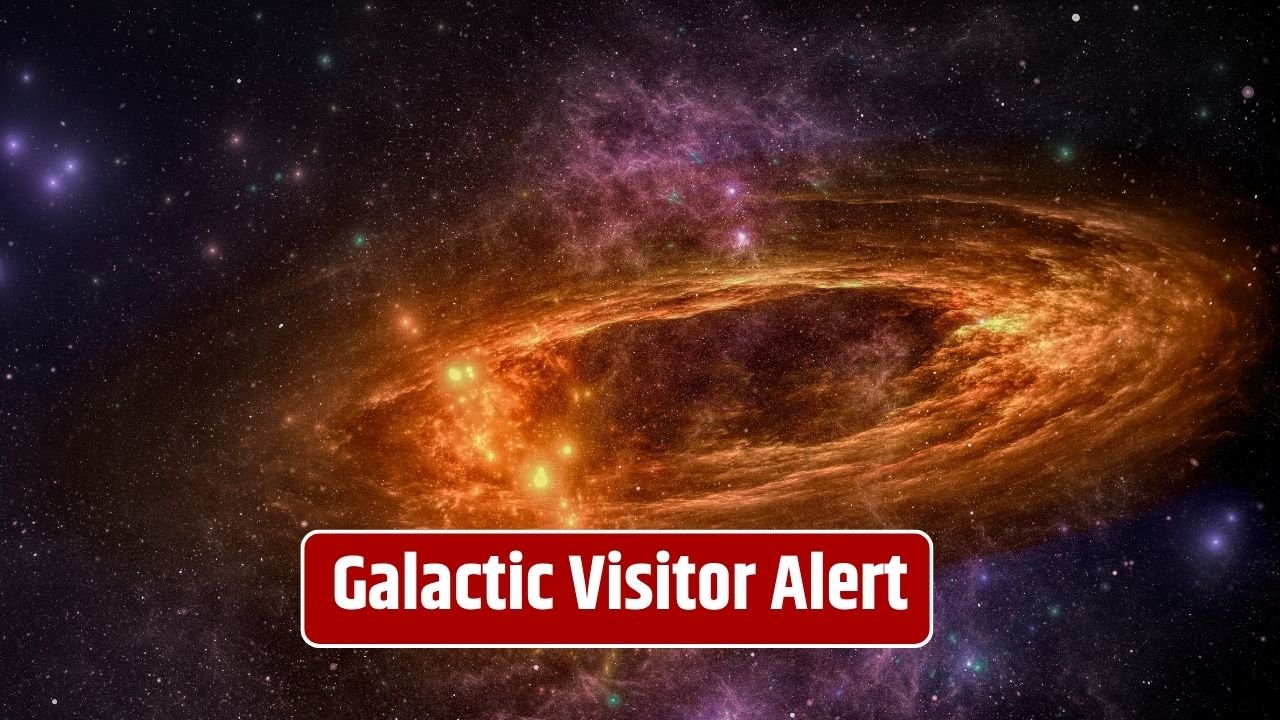NASA’s latest discovery feels like the opening scene of a sci-fi blockbuster. A mysterious object, nicknamed A11pl3Z, is racing toward our solar system at nearly 245,000 kilometers per hour—fast enough to lap Earth in just ten minutes. And here’s the kicker: it doesn’t behave like anything we’ve seen before.
Astronomers are intrigued—and more than a little puzzled. It’s not a comet. It’s not an asteroid. And its speed makes even previous interstellar visitors, like ʻOumuamua, look slow in comparison.
What NASA Detected
NASA’s Asteroid Terrestrial-impact Last Alert System (ATLAS) picked up A11pl3Z on June 25, 2025, and immediately noticed something odd. Most space objects caught by ATLAS are gravitationally bound to the Sun, looping endlessly in predictable orbits. But this one? It’s flying through on a hyperbolic trajectory, which means it came from beyond our solar system and will leave again—likely forever.
Its flight path will take it near Mars in October 2025, and at its closest, in December 2025, it’ll zip past the inner solar system. Thankfully, Earth will be on the opposite side of the Sun, so there’s no risk of a close encounter.
For now, scientists have classified it as only the third confirmed interstellar object ever discovered, following ʻOumuamua (2017) and 2I/Borisov (2019).
What Makes A11pl3Z So Unusual
Here’s where things get even stranger. Most comets flare up as they approach the Sun—their icy cores vaporizing into bright, streaming tails. A11pl3Z, however, remains eerily quiet. No visible coma, no tail, no outgassing. Just a massive, fast-moving chunk of something.
Early radar readings estimate its size between 10 and 20 kilometers across, making it possibly one of the largest interstellar visitors ever observed. Its lack of glow suggests it might be coated in dark material—absorbing sunlight instead of reflecting it.
Astronomers are scratching their heads. “A cometary origin still fits best,” says ESA planetary scientist Richard Moissl, “but if A11pl3Z turns out to be something else entirely, it could rewrite what we know about how solar systems evolve.”
Possible Explanations
| Hypothesis | What It Means | Likelihood (So Far) |
|---|---|---|
| Dormant Comet | A comet whose ices have already evaporated long ago in another star system | High |
| Rocky Interstellar Asteroid | Similar to ʻOumuamua, mostly rock or metal | Moderate |
| Fragment of a Rogue Planet | A chunk of a shattered planet ejected from its system | Low but exciting |
| Artificial Object | A probe or alien craft—no evidence supports this idea | Nearly zero |
NASA’s James Webb Space Telescope and Chile’s Vera C. Rubin Observatory are now tracking A11pl3Z, studying its heat signature and light spectrum. Their results, expected in early November, may finally reveal what this mysterious traveler is made of.
A Quick Refresher: What Counts as a Comet?
Comets are like frozen time capsules—mixtures of rock, dust, and ice left over from the early solar system. When they drift close to the Sun, heat transforms those ices into gas, forming their signature glowing tails.
Most come from the Kuiper Belt or Oort Cloud, billions of miles away. But when something like A11pl3Z enters from beyond those borders, it’s labeled interstellar—a messenger from another star system entirely.
Why This Discovery Matters
Interstellar objects are cosmic postcards from distant worlds. Studying them helps scientists understand how planetary systems form, evolve, and even how life’s ingredients—like carbon compounds—might travel between stars.
According to NASA’s Mark Norris, “A11pl3Z might be one of thousands of interstellar visitors quietly passing through our neighborhood. We’re just now getting good enough to spot them.”
In fact, NASA estimates up to 10,000 such objects may currently be drifting unnoticed through the solar system, too small or faint for our telescopes to catch—until now.
Could It Pose Any Risk to Earth?
Despite what social media might say, no, A11pl3Z poses zero threat. When it makes its closest pass in December 2025, Earth will be about 300 million kilometers away, safely hidden behind the Sun.
By mid-2026, it’ll have swung past our solar system entirely, heading back into the darkness between the stars.
If you want to keep tabs on it, you can track its trajectory on NASA’s Small-Body Database.
What We Might Learn From A11pl3Z
If telescopes detect unfamiliar elements—say, exotic metals or complex organic compounds—it could reveal how matter and chemistry differ in other star systems.
Each interstellar object like A11pl3Z is a cosmic time capsule, possibly billions of years old, carrying clues from the birth of distant worlds. And while it may only spend a brief time near our Sun, the data it brings could reshape what we know about the universe for decades to come.
FAQs
What is A11pl3Z?
A newly detected interstellar object first spotted by NASA’s ATLAS system in June 2025.
How fast is it moving?
Roughly 245,000 kilometers per hour—one of the fastest natural objects ever recorded.
Could it hit Earth?
No. Its orbit keeps it hundreds of millions of kilometers away, with Earth safely on the opposite side of the Sun.
Is it a comet or an asteroid?
Still unknown. It lacks a comet’s tail, but doesn’t behave like a normal asteroid either.
Why is it important?
Because it’s a rare visitor from another star system, offering scientists a rare chance to study the chemistry and physics of worlds far beyond our own.
